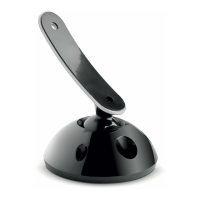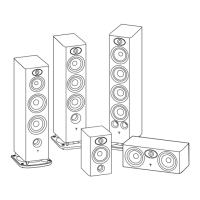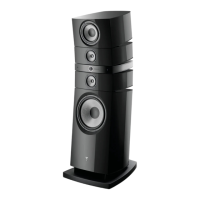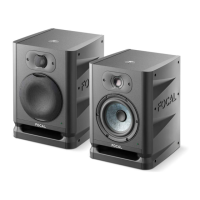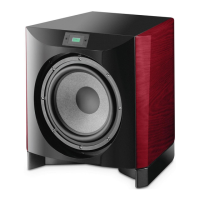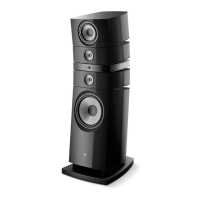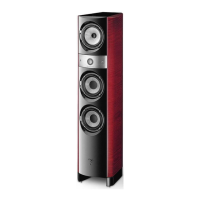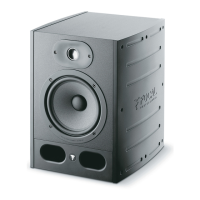EASY
A
User
manual
•
Where
to position your Loudspeakers
Your Easya speakers have been designed to reproduce as faithfully as possible every kind of music. Nonetheless, it
makes
sense to
follow
some
simple
rules
to
optimise
their
performance
and to guarantee good
tonal
balance and
a realistic sound stage.
The loudspeakers should
be
positioned symmetrically, facing the listening area, ideally
forming
an
equilateral
triangle
with
it.
It
is, however, possible to vary these distances to arrive at the ideal
compromise
for
any
particular
conditions
(Fig.
F)
The loudspeakers should
be
positioned at the same height, in the same
horizontal
plane. Ideally,
the
tweeter
should
be
positioned at the same height as the
listener's
ear
when listening
normally
(Fig.
G).
Do
not position
your
loudspeakers too close to a
corner
of the room and do not place
them
too close to a wall.
If
positioned close to a
wall
or
a
corner
this
has the effect of exciting certain resonances
within
the room and artificially
increasing the bass. Conversely, if the bass level is judged to
be
insufficient, you could
try
moving the loudspeakers
nearer
a
wall
to re-balance the bass level
(Fig.
HI.
Optimisation
For perfectionists, here is the
formula
for
optimal
positioning:
If
A is the distance
from
the centre of the
woofer
to the nearest
floor
or
wall,
8
is the distance to the next closest floor,
or
wall
and C the greatest distance [A< 8 <C).
the equation
8
2
=
AC
defines the ideal
loudspeaker
position.
•
For example:
If
the centre of the
woofer
is
50
em away
from
the back
wall
[A]
and 60cm
from
the
floor
[B]. then the side
wall
will
ideally
be
72cm away
[C
=
8
2
/A
=
72cm)
(Fig./).
Recommendations
for
use
The behaviour of the Easya loudspeakers depends
on
the acoustics
in
the listening room,
on
the correct positioning
of the loudspeakers
within
the room and
on
the position of the listener.
It
is possible to
work
these
elements
together
to
correct
or
improve a desired effect.
Stereo perception
is
imprecise and poorly centred:
try
moving the loudspeakers
closer
to one
another
and/or
have
them
facing the listening point.
Sound
is
harsh, aggressive:
the acoustic in
your
listening room probably has too many reverberations. Consider
using sound softening !carpets, upholstered
furniture,
wall
hangings, curtains, etc.] and sound reflecting
materials
[furniture]
to absorb
or
diffuse resonance.
Sound
is
"flat", "strangled":
there are too many sound
absorbent
items
in the room, the sound is soaked up. Look
for
the best
compromise
between sound absorbing and sound reflecting
materials
in
your
room.
In
general
terms,
it is
good to aim
for
the
wall
behind the loudspeakers being reflective
for
the sound to develop correctly. The
wall
behind
the Listening position,
on
the
other
hand, is ideally sound absorbing to avoid
rear
reflections
"contaminating"
the
stereo image. Furniture can
be
judiciously
placed
near
the side
walls
of the room to diffuse sound waves and ensure
certain frequency zones,
particularly
in the
mid-range,
Turning
Off Your
Television's Speakers
If
Easya loudspeakers are installed around your
TV
then you need to disable the speakers of
your
TV
so
that
the sound
is broadcast only
through
Easya. If
you can not find the correct setting to
turn
off
your
TV
speakers, please consult
the
user
guide
that
was packaged
with
your
TV.
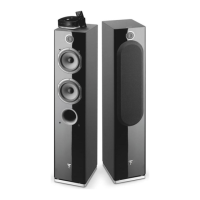
